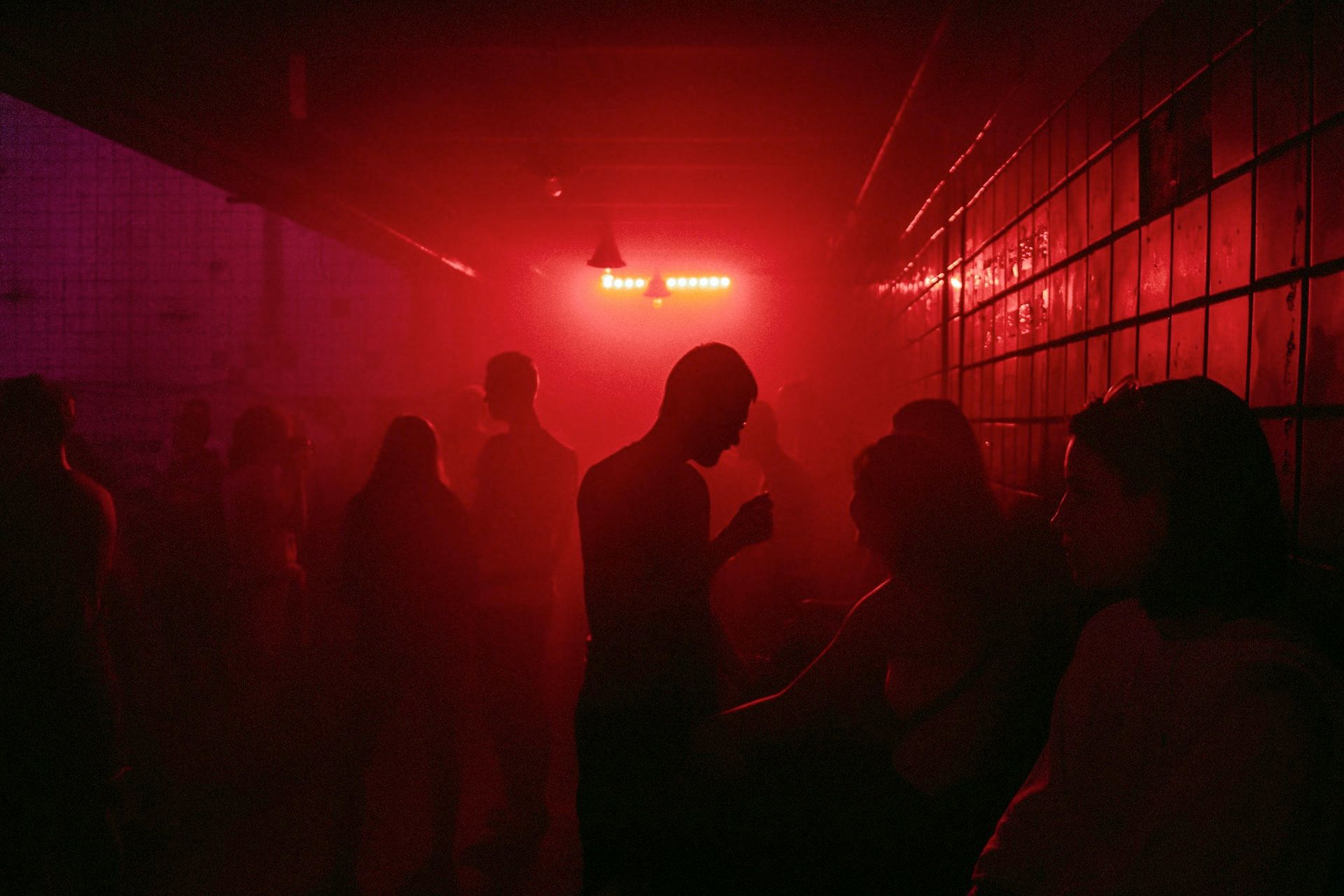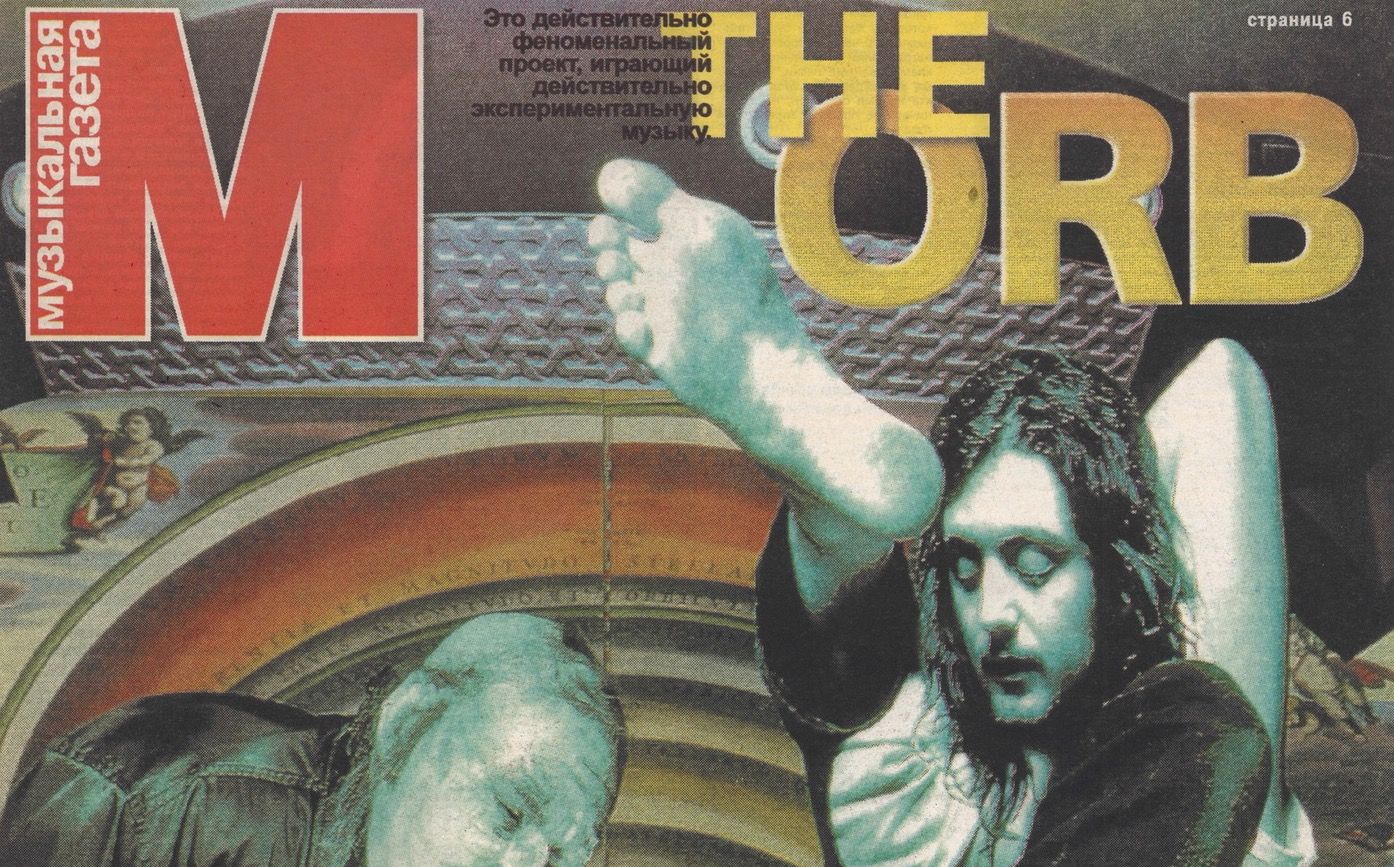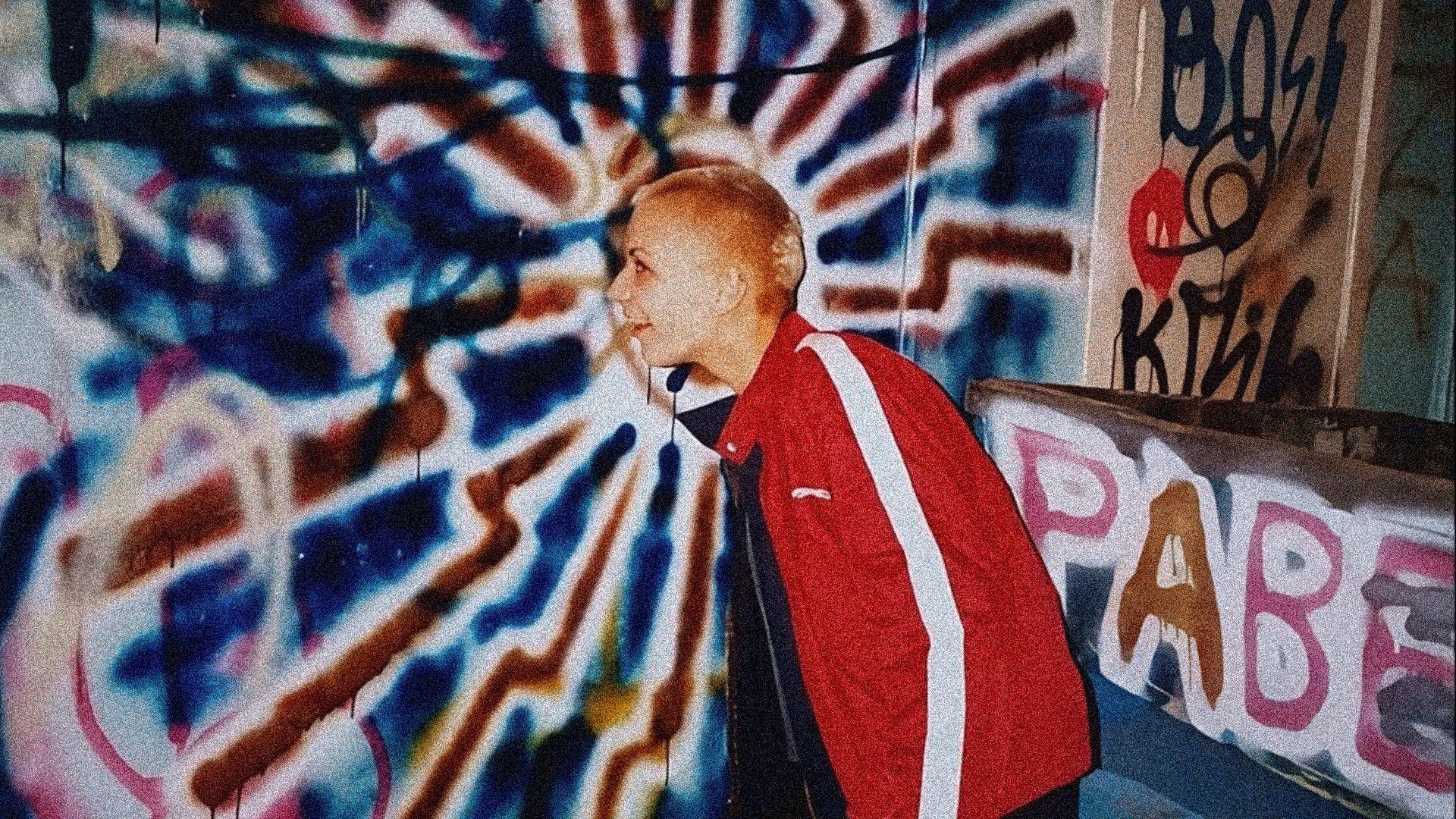Who are the Heroes of the Belarusian Electronic Scene of the 90s?
Names, projects, albums.
Next chapter of the story based on “Ikarus: Stories of Electronic Music in Belarus” podcast. The previous installments covered local electronic music roots and 90's raves. It's time to shift focus from events to the key figures – the long-forgotten heroes of the synths, drum machines and early DAWs who pioneered the trendiest sounds of the 90s. Belarusian-language text version is available on 34mag.net.
If you speak Belarusian and Russian, we highly recommend checking out the audio version of the podcast for full immersion. All you need to do is press play, close your eyes, and take a ride the old Ikarus bus through Miensk’s iconic nightclubbing spots of the era.
<iframe width="100%" height="450" scrolling="no" frameborder="no" allow="autoplay" src="https://w.soundcloud.com/player/?url=https%3A//api.soundcloud.com/playlists/1859530263&color=%23ff5500&auto_play=false&hide_related=false&show_comments=true&show_user=true&show_reposts=false&show_teaser=true"></iframe><div style="font-size: 10px; color: #cccccc;line-break: anywhere;word-break: normal;overflow: hidden;white-space: nowrap;text-overflow: ellipsis; font-family: Interstate,Lucida Grande,Lucida Sans Unicode,Lucida Sans,Garuda,Verdana,Tahoma,sans-serif;font-weight: 100;"><a href="https://soundcloud.com/radioplato" title="Radio Plato" target="_blank" style="color: #cccccc; text-decoration: none;">Radio Plato</a> · <a href="https://soundcloud.com/radioplato/sets/ikarus-all-episodes" title="Ікарус: гісторыі электроннай музыкі Беларусі" target="_blank" style="color: #cccccc; text-decoration: none;">Ікарус: гісторыі электроннай музыкі Беларусі</a></div><h2>Early Industrial Influences</h2>The wave of acid house and subsequent club subgenres from the late 80s to early 90s inspired a whole generation of Belarusian musicians to create their own unique sound. The technological advances helped too: electronic musical instruments and computers no longer took up entire rooms in research institutes, and were becoming way more accessible, albeit at a cost.
According to numerous insider accounts, the first Belarusian band to start incorporating electronics into their performances was the project called The R.A.F. Golf Clubs. It was created in 1991 by musician Gleb Galushko and Siarhiej Zabłocki, who later became a well-known restaurant-keeper. They were soon joined by a friend known as Petruccio who was a computer programmer. The crew immediately got an offer to record their material in Poland in a high-end studio equipped with the latest technology. In the town of Wejherowo, in the Tri-city area, they recorded five songs, which producer Jarek 'Pastor' Winiecki, who invited The R.A.F. Golf Clubs and aired the recorded material on his radio show Promocje Trojmiasta FM.
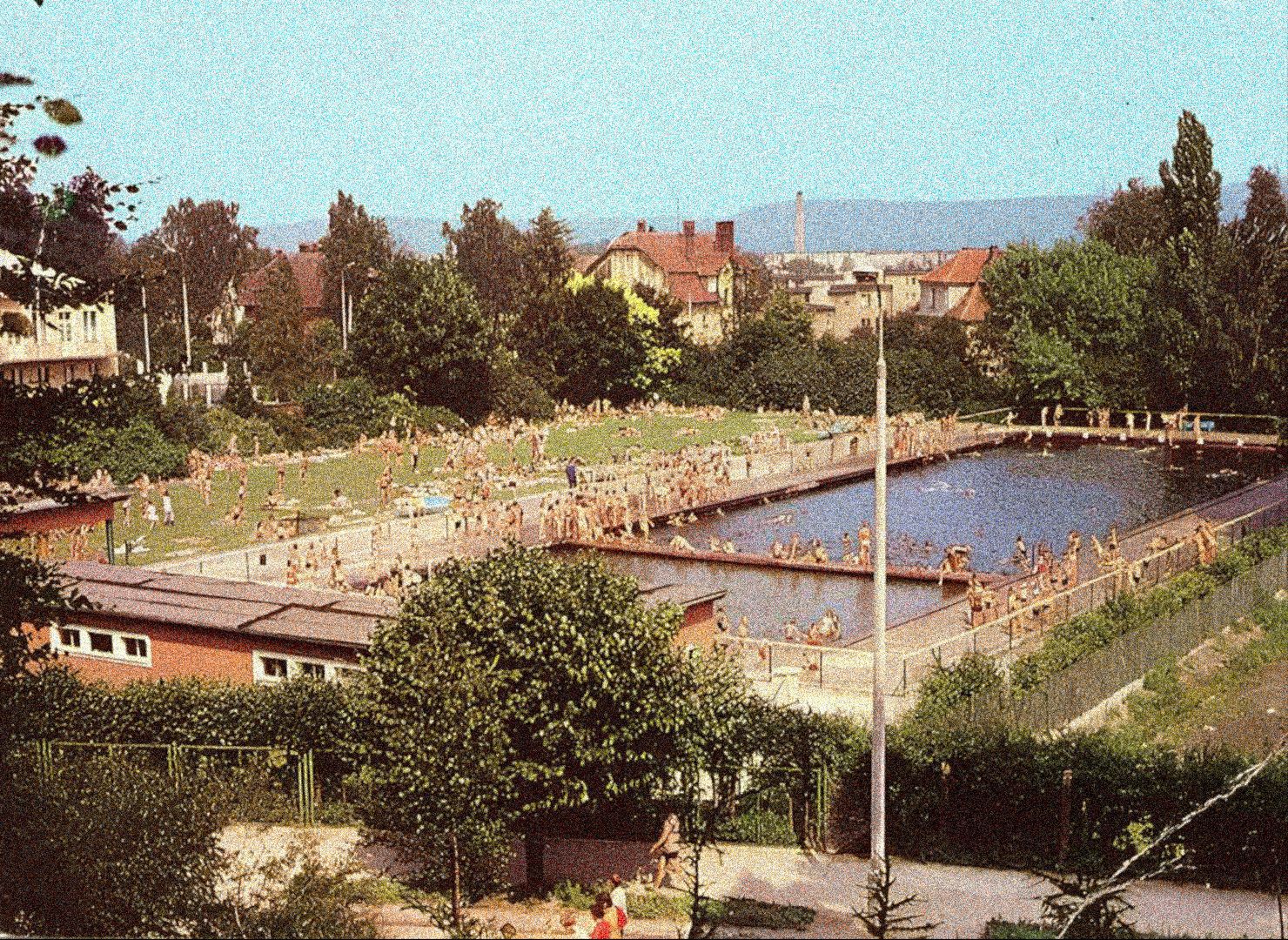
"The band featured a charismatic frontman Gleb Galushko with vocal stylings reminiscent of David Bowie or Suicide, electric guitar and electronics," – recalls Alexi Kutuzov, a.k.a. DJ I.F.U.. – "They did backing tracks on a computer, then added analogue synthesizers". According to the band, they were heavily influenced by Depeche Mode and Coil.
In Petruccio's own words it was Depeche Mode that first showed them that computers aren't necessarily dumb and boring: "I'm no musician myself, but I always loved unusual sounds. The computer made it possible for me to creatively contribute to the band's music. When playing with samples the sound is always unpredictable and you can't be accused of lack of formal musical knowledge. Moreover, our band was relatively small and we didn't have money for a lot of instruments".
Their first live performance as a duo consisting of Petruccio and Gleb Galushko took place on July 30, 1994 during a big show at the Miensk Sports Palace sharing the stage with Drum Ecstasy, HDDNname and Valik Grishko. After the big arena show, the R.A.F. Golf Clubs would go on to play a number of smaller gigs in Miensk venues like Fil's jazz club, Addis Abeba, Try Parasiaty, Salut, and the Next Stop parties. Unfortunately, the band only left a handful of demos and live recordings behind. You can check out the some of those rare artifacts here:
<iframe width="100%" height="166" scrolling="no" frameborder="no" allow="autoplay" src="https://w.soundcloud.com/player/?url=https%3A//api.soundcloud.com/tracks/1913074292&color=%23ff5500&auto_play=false&hide_related=false&show_comments=true&show_user=true&show_reposts=false&show_teaser=true"></iframe><div style="font-size: 10px; color: #cccccc;line-break: anywhere;word-break: normal;overflow: hidden;white-space: nowrap;text-overflow: ellipsis; font-family: Interstate,Lucida Grande,Lucida Sans Unicode,Lucida Sans,Garuda,Verdana,Tahoma,sans-serif;font-weight: 100;"><a href="https://soundcloud.com/radioplato" title="Radio Plato" target="_blank" style="color: #cccccc; text-decoration: none;">Radio Plato</a> · <a href="https://soundcloud.com/radioplato/the-raf-golf-clubs-boy-the-laser-blood-child-love-snippets" title="The R.A.F. Golf Clubs - Boy The Laser Blood / Child Love (snippets)" target="_blank" style="color: #cccccc; text-decoration: none;">The R.A.F. Golf Clubs - Boy The Laser Blood / Child Love (snippets)</a></div>July 5, 1992 Miensk saw a concert of Nitzer Ebb – a legendary UK industrial/EBM outfit friendly with Depeche Mode. Their sound was a true revelation for the local musicians in attendance. It was around that time that art-group Belarusian Climate spawned the band Drum Ecstasy, that experimented with percussive industrial sounds and went on to have somewhat of an international career, including being featured on a soundtrack of a 2004 Russian blockbuster "Nochnoi Dozor".
HDDNName, an electronic project created by Siarhei Navicki a.k.a. Miki, was another name to come out of Belarusian Climate milieu. Miki used a computer in combination with other instruments: electric guitar, bass, saxophone and other wind instruments. Stylistically, the project was a mix of punk rock, industrial, synth pop and ambient with spoken word poetry. Recordings of the project’s musical output are also few and far between:
<iframe width="100%" height="166" scrolling="no" frameborder="no" allow="autoplay" src="https://w.soundcloud.com/player/?url=https%3A//api.soundcloud.com/tracks/1913074538&color=%23ff5500&auto_play=false&hide_related=false&show_comments=true&show_user=true&show_reposts=false&show_teaser=true"></iframe><div style="font-size: 10px; color: #cccccc;line-break: anywhere;word-break: normal;overflow: hidden;white-space: nowrap;text-overflow: ellipsis; font-family: Interstate,Lucida Grande,Lucida Sans Unicode,Lucida Sans,Garuda,Verdana,Tahoma,sans-serif;font-weight: 100;"><a href="https://soundcloud.com/radioplato" title="Radio Plato" target="_blank" style="color: #cccccc; text-decoration: none;">Radio Plato</a> · <a href="https://soundcloud.com/radioplato/hddnname-desert-shalala-so-proud-snippets" title="HDDNName - Desert / Shalala / So Proud (snippets)" target="_blank" style="color: #cccccc; text-decoration: none;">HDDNName - Desert / Shalala / So Proud (snippets)</a></div><h2>Autism – the Black Sheep of the Scene</h2>The next wave of early electronic artists was inspired by more contemporary UK dance acts such as The Future Sound of London, The Orb, Orbital, Aphex Twin and others, alongside the old guard of Depeche Mode, Nitzer Ebb, Front 242 and Coil. These newer local projects weren't tied to the industrial aesthetic, but didn't necessarily go for the full-on dancefloor techno either, choosing instead to dive into the deep waters of electronic experimentation. Autism and Vacuumable are two main names of this wave.
Autism's initial lineup included two members: Vadim Militsin and Dźmitry Charkoŭski. The two first met in East Germany, where their fathers were stationed as Soviet Army officers. That was where they first got the bug for electronic music and made their first attempts at it without any formal training. In the early 90s, as their families returned to Miensk, the friends continued their experiments.
Vadim Militsin: In the early 90s I made my first attempts at squeezing some interesting sounds out of old Soviet synthesizers, processing them through Soviet guitar pedals to make them sound even more experimental. That was the only equipment that was available at the time. But nothing really came of it, so I stopped after a while.
By 1995 we scraped some cash together with Dzima and bought a Yamaha synthesizer. It was not too advanced by today's standards. It had General Midi-sounding soundbanks with rudimentary synthesis capabilities. But for us it was quite a revelation!
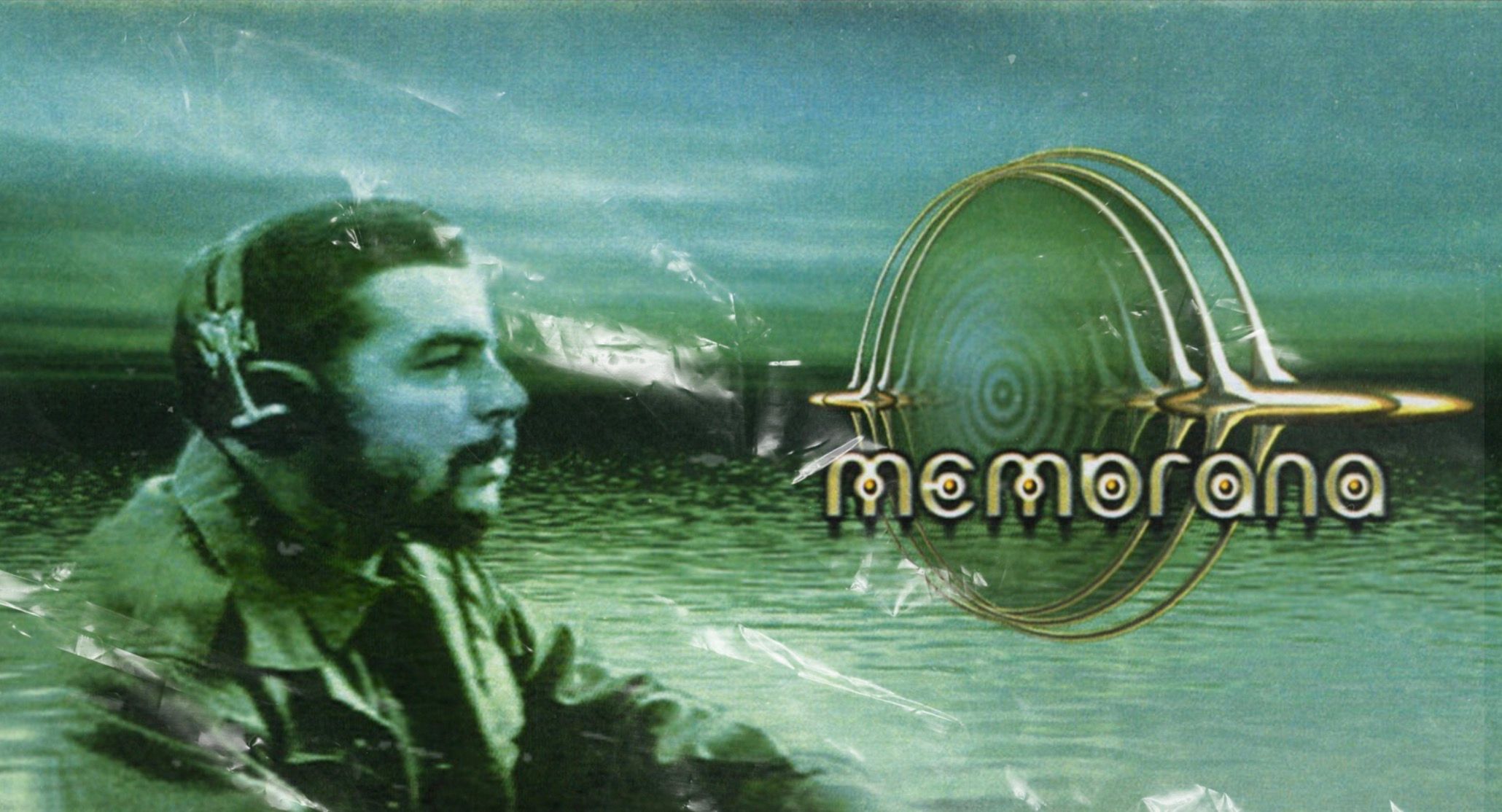
Experiments with this limited set of equipment resulted in The Spiral Twist demo cassette recorded in 1995. The material sounded like a mix of techno pop, trance and Coil, and wasn’t quite good, according to the feedback the duo received from their friends and acquaintances. So the musicians decided to leave it, refrain from releasing it into wider circulation, and start fresh. The guys sold the Yamaha and bought a computer equipped with the legendary Turtle Beach sound card, which cost an outrageous 280 U.S. dollars at the time. The money, according to Vadim’s recollection, his parents gave him to fix his teeth.
The new equipment was used to record Autism's albums Hypno-Pop (1996), Ultramarine (1997) and Membrana (1997). Autism started playing regularly at local venues. The group was playing live multiple times per week, and did a few tours of the Netherlands. Eventually, Dźmitry grew tired of performing, and Autism turned into Vadim's solo project.
– Our first live show was at the House of Culture of something-or-other, – Vadim recalls the electronic duo's early days. – There were some punks playing before us, then some other bands, and then us at the very end. Of course, we stood out as black sheep in that line-up. Our music and the whole approach were quite a curiosity: two guys with synthesizers on stage and not much else. No guitars, no vocals. But the reception was good.
Membrana released in 1997 became the band’s true magnum opus. The album was remastered and reissued in 2022 by Omninorm label and is now available on all streaming platforms for your listening pleasure.
<iframe style="border: 0; width: 100%; height: 472px;" src="https://bandcamp.com/EmbeddedPlayer/album=2797308487/size=large/bgcol=333333/linkcol=ffffff/artwork=small/transparent=true/" seamless><a href="https://autism-ny.bandcamp.com/album/membrana-2022-remaster">Membrana (2022 Remaster) by AUTiSM</a></iframe>It is a splendid example of a narrative album, where each track progressively unfolds the musical landscape utilizing such genres as neo-classical, ambient, trip hop and world music. According to Vadim, the idea for this album came to him during a trip to Switzerland in the fall of 1997. "It's hard to say why exactly such Mesoamerican and Oriental motifs came to me while working on it," he says. "There’s nothing about Switzerland as such on ‘Membrana’. I was trying to imagine Europe in a couple of hundred years into the future and how its soundscape would change." Be that as it may, the album still sounds fresh and relevant today.
Vadim continues experimenting with the sound and explores the dark side of jazz on the following album called Pornojazz released in 1998. The album was initially released on Delta 9 Records – the first Belarusian electronic music label created by Vadim himself. A limited run of physical copies of the album has been quickly sold out to a close circle of Autism fans. You can find unofficial cassette rips of the album online, but it has never been re-released officially, neither does Vadim entertain such an idea.
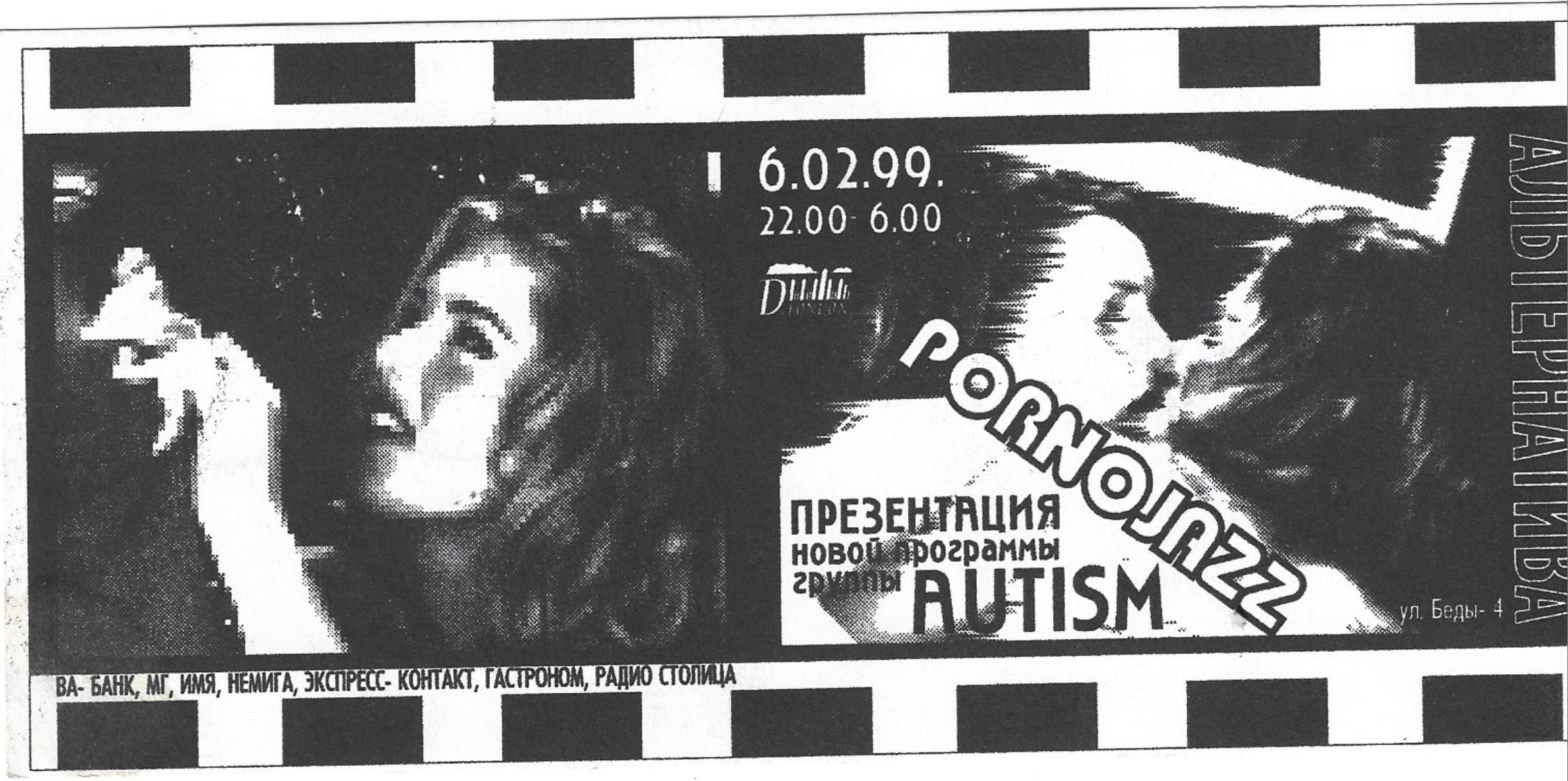
In 2000, Vadim Militsin moves to the U.S., but before leaving, he manages to release Neverberator which feels like a farewell to his homeland, even though some tracks sound as if they come from the future, from the place he is heading to: "By the way, that album turned out really special. Perhaps because of the turmoil I was in, constantly thinking about moving, having to abandon everything and start from scratch in a new place."
After the move, Autism would continue to release albums into the 2000's with Vadim occasionally visiting Miensk and presenting them at intimate listening parties. Neverberator has been re-released by Omninorm in 2023 and is now available on the streaming platforms.
<iframe style="border: 0; width: 100%; height: 472px;" src="https://bandcamp.com/EmbeddedPlayer/album=294619794/size=large/bgcol=333333/linkcol=ffffff/artwork=small/transparent=true/" seamless><a href="https://autism-ny.bandcamp.com/album/neverberator-2023-remaster-2">Neverberator (2023 Remaster) by AUTiSM</a></iframe><h2>Vacuumable: Inside a Kangaroo's Dream</h2>Vacuumable is another pillar of Belarusian electronics, created by two seasoned scene members Alexi Kutuzov, a.k.a. DJ I.F.U. and Andrei 'Graf' Čuhunoŭ. The group was initially named Vacuum and recorded their first album under that name. When they found out about their Swedish techno-pop namesakes, the name was swiftly changed to Vacuumable. Their debut album titled Out of Net and was released on cassette in 1995 as a limited run by the same label, Delta 9. The album was featured in Muzykal'naja Gazeta (Musical Newspaper) and even made it into the newspaper’s top ten electronic albums chart.
– In Australia, there is a tribe that plays a musical instrument called the didgeridoo, – Graf muses about the album. – They have a legend, according to which, they believe that everything happening around us and the entire world is just a kangaroo's dream. They play didgeridoo to break through to the wakefulness and free themselves. That's how we treat our music – as a way to free our minds, and hopefully, the listeners' minds in the process. Because the surrounding reality seems so grim sometimes that you don't even want to think about it, let alone experience it...
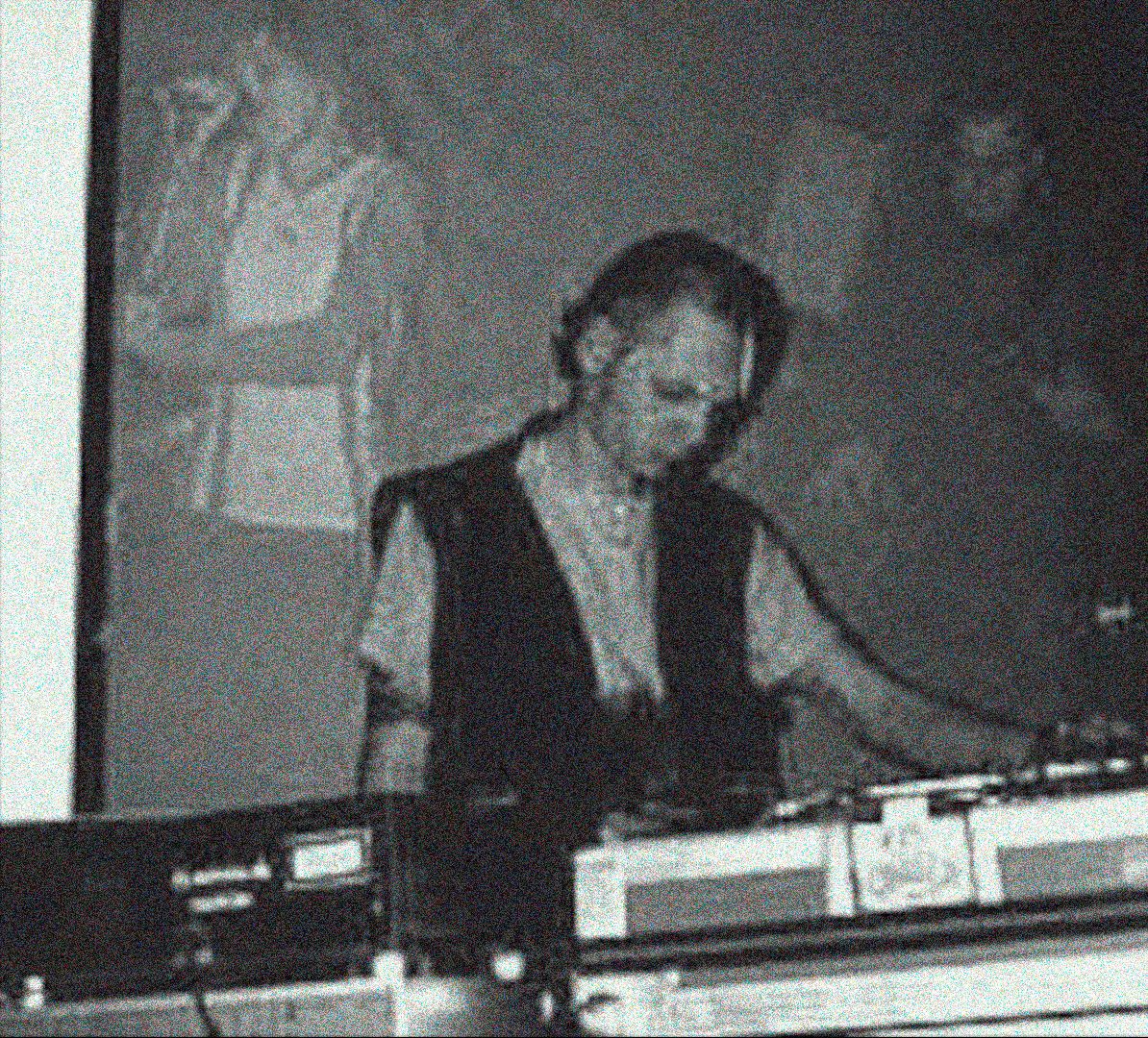
The first album called Out Of Net is stylistically divided into two parts: the A-side features viscous ambient bordering on drone and electronic escapades, while the B-side delivers the beats centered around and an uncompromising, full-on four-on-the-floor kick drum that leave you with no choice but to dance. Essentially, the second half of the album is the earliest example of actual Belarusian techno. Aside from Delta 9's micro-release the album did not reach a wider audience, but the guys have just recently digitized it and graciously allowed us to use it in the audio version of Ikarus podcast.
DJ Rude-E was the first to play breakbeat and jungle during one of the visits of the Dutch cultural delegation in Miensk. Inspired by these sounds, Vacuumable took it upon themselves to explore these genres in their following releases. Their next album Organics (1998) is also the first example of Belarusian drum'n'bass, although ambient and trip hop experiments were also prominently featured on it. They really let loose on this one: the album length was over two hours and it was released as a two-cassette set.
– Each track is like a snapshot of a certain mood, – Graf says in another interview for Muzykal'naja Gazeta. – For instance, I would get into an argument with my wife, or see the snow falling beautifully out the window and then play a few chords that captured the mood of the moment just perfectly. And that would become the base for a track. The album basically depicts a week in the life. Each day sounds a bit differently. That's life. Perhaps, that's why we called it ‘Organics’ – to denote an organic living thing.
The album shares a similar fate with Vacuumable's debut: the limited initial cassette run that has been recently digitized, and is now awaiting re-release. You can check out how it sounds in Ikarus podcast, fast forward to around 10:12 mark.
<iframe width="100%" height="166" scrolling="no" frameborder="no" allow="autoplay" src="https://w.soundcloud.com/player/?url=https%3A//api.soundcloud.com/tracks/1890715623&color=%23ff5500&auto_play=false&hide_related=false&show_comments=true&show_user=true&show_reposts=false&show_teaser=true"></iframe><div style="font-size: 10px; color: #cccccc;line-break: anywhere;word-break: normal;overflow: hidden;white-space: nowrap;text-overflow: ellipsis; font-family: Interstate,Lucida Grande,Lucida Sans Unicode,Lucida Sans,Garuda,Verdana,Tahoma,sans-serif;font-weight: 100;"><a href="https://soundcloud.com/radioplato" title="Radio Plato" target="_blank" style="color: #cccccc; text-decoration: none;">Radio Plato</a> · <a href="https://soundcloud.com/radioplato/ikarus-ep4-muzyki-i-hurty-part2" title="Ікарус: гісторыі электроннай музыкі Беларусі - Эпізод 4. Музыкі і гурты. Частка 2" target="_blank" style="color: #cccccc; text-decoration: none;">Ікарус: гісторыі электроннай музыкі Беларусі - Эпізод 4. Музыкі і гурты. Частка 2</a></div>After Organics Alexi Kutuzov left the project to focus on DJing and promoter work. Graf released three more Vacuumable albums: Relaxator, Jump Into The Vacuum, and Radiocozmos, after which he stepped away from music.
<h2>Elements of Sci-Fi – Electronic Demiurges</h2>In 1995, there were only a handful of Belarusian electronic projects, but just a few short years later the situation was changing rapidly. A myriad of new names appeared over the following two years: Safety Matches (which later split up into Energun 22 and Kanstruktar; Energun 22 is now known as simply Energun), Stereonoize Gallery, Dullgreen Lab, Romantic Sap, Rabbit X, Elements of Sci-Fi, Alex Coostoff, Ataka S Breyushchego Polyota, Hyperliberzon & Synchrophazatrone, Sea Robot of Love, The Sacred, Romantic Sub (from Homiel), Rabbit Eggs (from Viciebsk), I/DEX (from Navapolacak) and others. In 1997, The Future Sounds of Minsk festival took place, featuring as many as 15 electronic projects, each presenting their live sets to the festival's audience. Here is how Mikita Chudiazkoŭ, a founding member of Elements of Sci-Fi recalls the beginning of his musical journey:
– Back in the day, there were no opportunities to make music outside of joining a vocal-instrumental ensemble or a choir. Then, suddenly, it turns out that music can also be made on computers, interesting music too. While on a holiday trip to Ukraine with my parents I met a guy who had a computer and a very curious piece of software called Scream Tracker. Trackers were prototypes of modern digital sequencers. Computers had rather barebones specs back in the day, so to make any sort of sounds you also needed to buy a separate thing called Covox – a basic digital-to-analog converter, which enabled you to output sounds from your computer to an audio system or an amplifier.
![]()
Our first Covox we soldered together ourselves. You can't even imagine the joy we felt to have a basic four channel virtual home music studio at our fingertips for the first time, allowing us to create drum, guitar, synthesizer parts, and anything else we wanted! That was around 1992. I was in high school and I wanted to become a computer programmer, and considered music-making a hobby.
Then, in the latter half of the 90's Belarus sees a real boom of new electronic music. Some of my classmates got into rap. Suddenly, it turns out, I’m a go-to guy for making your own beats. At a certain point, our older friends we looked up to started making their own electronic projects.
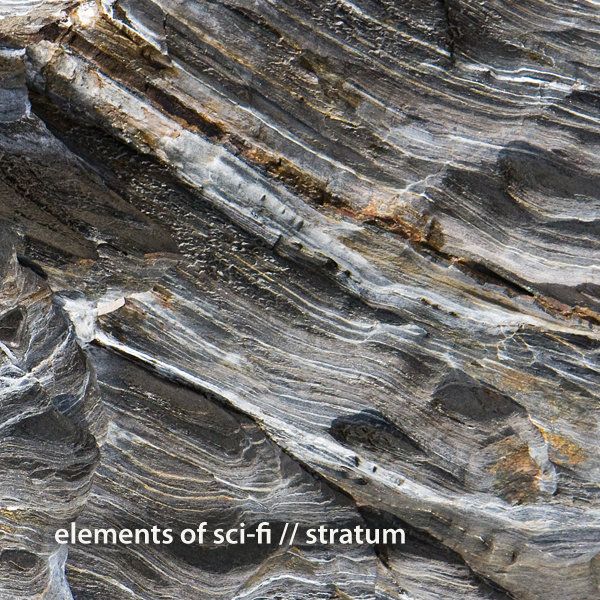
Mikita was joined by his friend Dźmitry Pratasievič and together they formed Elementy Nauchnoi Fantastiki (a.k.a. Elements of Sci-Fi). Their performance at The Future Sounds of Minsk marked a turning point for the band, and the musicians began to take their project more seriously. The live set they played at the festival was based on the album they had released on cassette that is nowadays considered lost media. They also recorded another album in a professional studio in Miensk – this one is supposedly still out there awaiting a digital re-release.
The duo ran the project until 2000, when Dźmitry emigrated to Belgium with his wife Sviatlana, where they rebranded the project as Elements of Sci-Fi.
<iframe style="border: 0; width: 100%; height: 472px;" src="https://bandcamp.com/EmbeddedPlayer/album=1371002370/size=large/bgcol=333333/linkcol=ffffff/artwork=small/transparent=true/" seamless><a href="https://elementsofscifi.bandcamp.com/album/climate-control">Climate Control by Elements Of Sci-Fi</a></iframe><h2>Home-made Cyberpunk by Alex Coostoff</h2>Another significant figure in the Belarusian electronic scene of the 1990s is Alaksiej Kustaŭ a.k.a. Alex Coostoff. Originally from Polacak, he began playing alternative rock in the band College A, with which he even participated in the famous local festival Rok-Kola in 1992. Six months later, the band broke up, and Alex became interested in electronics: "I bought a rhythm computer drum machine – editor's note, and then a keyboard, so I could record basslines etc. I saved up some money and went to Moscow to buy a portastudio that would enable me to play by myself. I already had all the instruments: several guitars, a bass guitar, keyboards – a complete setup to make a variety of sounds with."
In 1996 he joined local rock band The Stokes, with whom he moved to Miensk, where he met Mikita Chudziakoŭ and Dzima Pratasievič from Elementy Nauchnoi Fantastiki. Together they created an industiral/hardcore project Ataka S Breyushchego Polyota. At the same time he began working on his solo project, with which he played at Future Sounds of Minsk in 1997.
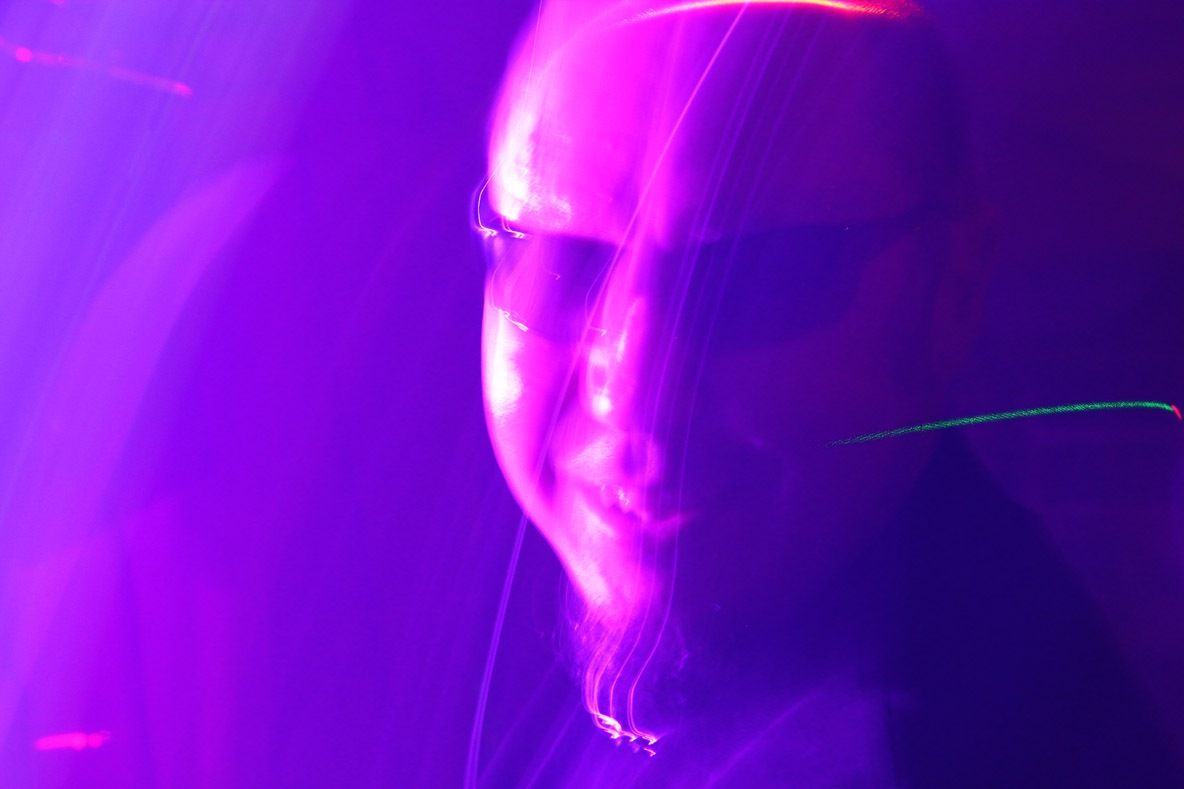
Under the alias Alex Coostoff he released several albums, including Brother (1996), Chronosinciasticum Infunabulum (1997), Dissenter (1998), Alisa V Gostyakh U Malen’kogo Princa (1998), and Sakura’s Shade Dimension (1999). Anatol' Viečar, a show-runner of several TV programs including Akalada and Klip-Abojma liked his 1998 album so much that he helped produce a music video for one of the songs from it, which ended up stayeing in top five music videos of Klip-abojma for about a year. In 1998, Niamiha newspaper called Alex Coostoff of the best projects of the year and in 2000 he received the grand-prix of Cyberpank electronic music festival.
The album Dissenter was reissued in 2015 by the California label Carrera Linn Cultural Exchange Records. It is a veritable classic of Belarusian electronics which still sounds fresh and interesting today.
<iframe style="border: 0; width: 100%; height: 406px;" src="https://bandcamp.com/EmbeddedPlayer/album=2018661672/size=large/bgcol=333333/linkcol=ffffff/artwork=small/transparent=true/" seamless><a href="https://clcx.bandcamp.com/album/dissenter">Dissenter by Alex Coostoff</a></iframe>– The album is made using Roland TR-808 drum machine, which has gained cult status over the last 40 years with its sound instantly recognizable around the world. The basslines are made using the TB-303. It's a basic setup that was made famous by the likes of Alex Reece, Aphex Twin or Green Velvet. That's what gives the album a timeless sound. A lot of drum machines of the era, like Casiotone or some Korg models, remained exotic curiosities, while the Rolands became the true basis of electronic music.
Alex calls his genre cyberpunk in the true sense of the word. "Nowadays, things like retrowave or vaporwave are considered cyberpunk, but that's not it. Cyberpunk refers to any kind of d.i.y. electronic music made with whatever technological means available. It can be a power drill or a microphone plugged into a guitar pedal. Cyberpunk, for me, is also a way to understand the surrounding world."
In the 2000s, Alaksiej organized events and played in a few other bands, but he didn’t find new opportunities for growth and soon got a job as a video editor at one of the TV stations. Soon thereafter moved to Moscow, where he resides to this day. In 2008 he started his other project called Xaver. He continues to work on music and participates in various experimental projects, where he further explores the world through cyberpunk.
<h2>Energun. Belarusian Techno Apostles</h2>Energun is a techno project that was founded in 1996 by Dzianis Sinicyn and Yahor Saskaviec, and later joined by Siarhej Maksimčuk. At first, Energun tried to compose music on a computer using the Sound Club program, but they found the built-in sounds lacking. So, they started experimenting with old Soviet analog synthesizers such as Altair, Polivox and Alisa, sampling them into the computer, and then making tracks with those sounds. Gradually, they transitioned to more advanced software like FastTracker.
They participated in various Miensk compilation releases from the very start; for example, their tracks can be found on the Minsk Underground Session Vol. 1 and Overdose. Initially they experimented with electro downtempo and experimental electronics. After that they released an album on Delta 9 titled Groove. It was the most expensive, but also the most popular release by the label. In 2001 they were the first Belarusian electronic musicians to be released on vinyl, with Forgotten Fly EP released in Austria (including a remix by Arkus P), and Don't Joke With Robots EP released in Germany. These were first of many vinyl releases by Energun, which remains one of the most successful Belarusian electronic projects to date.
<iframe style="border: 0; width: 100%; height: 340px;" src="https://bandcamp.com/EmbeddedPlayer/album=3926678434/size=large/bgcol=333333/linkcol=ffffff/artwork=small/transparent=true/" seamless><a href="https://schubfaktor.bandcamp.com/album/forgotten-fly">Forgotten Fly by Energun 22</a></iframe><h2>Čarka, Škvarka, Buben</h2>On the other side of the spectrum of Belarusian electronic underground of the 1990s resides another influential and highly prolific figure – Vladislav Buben. He spent his school years in Hungary, where his musical taste was shaped by new wave, hip-hop, and electronic music on the one side, and heavy metal and post-punk on the other, while he was also organizing school parties. In 1990, he returned to Miensk, where he became involved in the Belarusian music scene. His first band was called Barfly's Dreams, and they debuted at the Alternative music festival at the Udarnik Cinema in 1993. Besides Ulad, the band's lineup included Koscia Muzyroŭ, Honza amd Uladzimir Mulyavin Jr., the son of the famous Belarusian group Pesniary frontman. The band played hardcore punk with lyrics in English and regularly performed at various club nights and concerts, maintaining close ties with the metal scene.
<iframe width="560" height="415" src="https://www.youtube.com/embed/lsJRvprhUps?si=AbGAVsm1eRchn1mp" title="YouTube video player" frameborder="0" allow="accelerometer; autoplay; clipboard-write; encrypted-media; gyroscope; picture-in-picture; web-share" referrerpolicy="strict-origin-when-cross-origin" allowfullscreen></iframe>Early on they got interested in electronics and began incorporating drum machines in their tracks. But soon, Ulad and Koscia started a side-project Fat Not Dead, which was headed straight to the electronic/industrial side of heavy metal. The band self-released the album The Stoned Deltaplaners Songs in 1997, followed by Taboo (1998) and Cybermadness (1999) on Music Violence Productions label from Homiel specializing in extreme music. The sound of this project can be described as noisy electro-industrial with gabber and metal elements. Their earliest releases are mostly lost to history, but the project is in the middle of a revival phase right now, actively releasing new material available on all streaming platforms.
– Fat Not Dead initially had keyboards, bass, and guitar, but then it evolved into an EBM project, – recalls Ulad Bubien. – In addition to that, I created the project called Škvarка. Then I made project Buben in the styles of digital hardcore and power rhythmic noise. I played live a lot as Buben – over 150 shows in different countries. As Fat Not Dead we played all around Europe: Moldova, Hungary, Germany, Sweden, Austria. For about two years I played with Ambassdor 21. I also worked with Yauhien Rahozin, who is one of the pioneers of Belarusian electronic music. He is the creator of Stereonoize Gallery and together we made eight or nine noise projects.
Here's a fun story. We used to work at a radio station together and one day we had this elaborate prank idea: we created a website about an imaginary Belarusian noise scene, recorded 18 tracks under nine different artist aliases, and uploaded them so it looked like some sort of Belarusian noise scene existed. Some seven or eight years later I get interviewed by a western journalist and he asks me if I know anything a project called Mitrimonio. The name rang a bell, but I couldn’t quite place it. Eventually, I recalled that it was one of those fictitious project names. We forgot all about it after we made that compilation. But people did listen to it in earnest, it had thousands of downloads total over the years. But for us it was all fun and games.
<h2>Electronic Compilations</h2>Our overview would not be complete without a mention of some of the notable compilations of Belarusian electronic musicians of the era. First such compilation was Zapakh Elektrichestva (The smell of electricity) released by the Delta 9 label in 1997. It featured tracks by label residents Vacuumable, Autism, Dullgreen Lab and Guarana Electric. In Vadim Militsin's opinion, some tracks on it sound naive and archaic today, but nonetheless, they became the classics of the Miensk electronic sound. This compilation is, unfortunately, not available online.
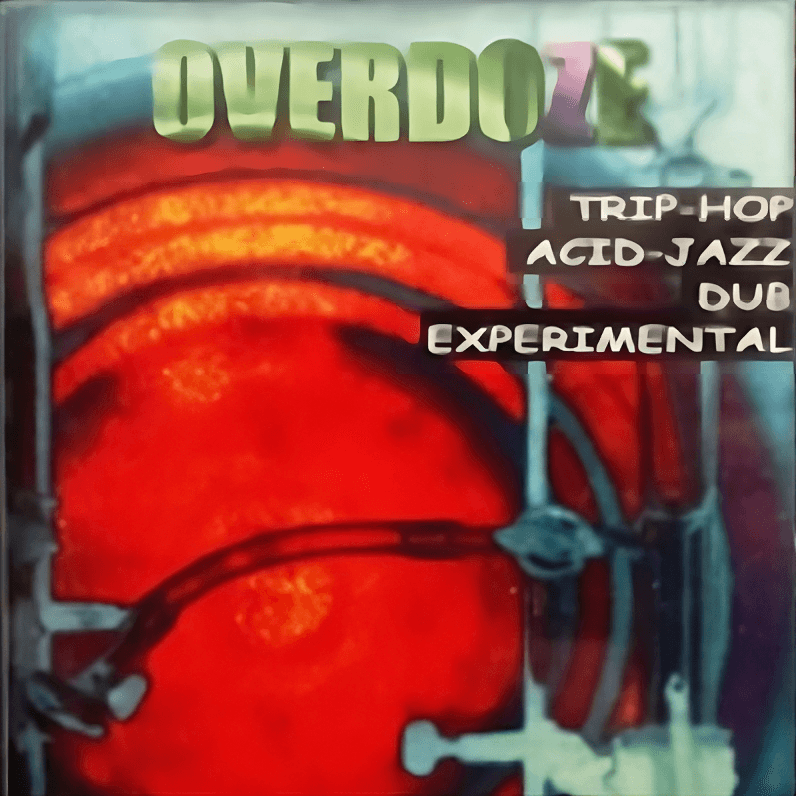
Then, in 1998, Delta 9 releases a conceptually curated VA titled Overdoze featuing trip-hop, acid jazz, and downtempo tracks from the cream of the crop of the Miensk scene: DF, Dulgreen Lab, Autism, Elementy Nauchnoi Fantastiki, Energun 22, Vacuumable, Alex Coostoff and others. It sounds dark, yet highly original and really cool! The compilation has been digitized and circulating among fans, but, unfortuantely, not widely available online to the public.
In the same year, 1998, another notable Miensk label, I&I Group Records, released Minsk Underground Session Vol. 1. It featured a very similar lineup of local experimental electronics experts: DF, Autism, Alex Coostoff, Elementy Nauchnoi Fantastiki, Energun 22, DJ Shaker, Novyje Prikluchenia, Vacuumable. It is available in mixtape form on MagentaLove mixcloud, where you can also find mixes by Belarusian DJs of the era.
<iframe width="100%" height="120" src="https://player-widget.mixcloud.com/widget/iframe/?hide_cover=1&feed=%2Fmagentalove%2Fminsk-underground-session-vol1-1998%2F" frameborder="0" ></iframe>It’s also worth mentioning the compilation titled Deltaphonica, featuring a collection of new electronic music released in 1999, and the Rezervacyja compilation by the eponymous Miensk club. The latter was made in 1997 and presents the assortment of genres from the Miensk alternative scene: from grunge to metal, to breakbeat, to industrial and techno. The artists featured on the cassette are Herbodez, Hasta La Fillsta, Jo-Jo, Sarcastic Green, Hyrb i Syn, Fat Not Dead, Autism, Vacuumable etc. The compilation has not seen a digital release, but a high-quality tape rip has been circulating among Belarusian diggers.
<br>* * *
Of course, we couldn’t cover all of the heroes of the Belarusian electronic scene of the 90s. Check out the audio version of the podcast “Ikarus: Stories of Electronic Music of Belarus” to hear a few more. In the meantime, we can round up this chapter by a Valik Grishko track that caputres the mood of the late 90s Miensk perfectly. His dreamy romantic songs sung in different – sometimes made-up – languages from Soley album have been recently re-issued. The album dates back to 2001 originally and is a culmination of the Valik’s previous decade of song-writing.
<iframe width="560" height="415" src="https://www.youtube.com/embed/KMPPG7wHoNE?si=QUpEv2g8HkKigJYz" title="YouTube video player" frameborder="0" allow="accelerometer; autoplay; clipboard-write; encrypted-media; gyroscope; picture-in-picture; web-share" referrerpolicy="strict-origin-when-cross-origin" allowfullscreen></iframe>Check out the podcast on Spotify, SoundCloud and Apple Podcasts

Translation into English by Alik Khomiak, artwork by Yana Zenovitch
